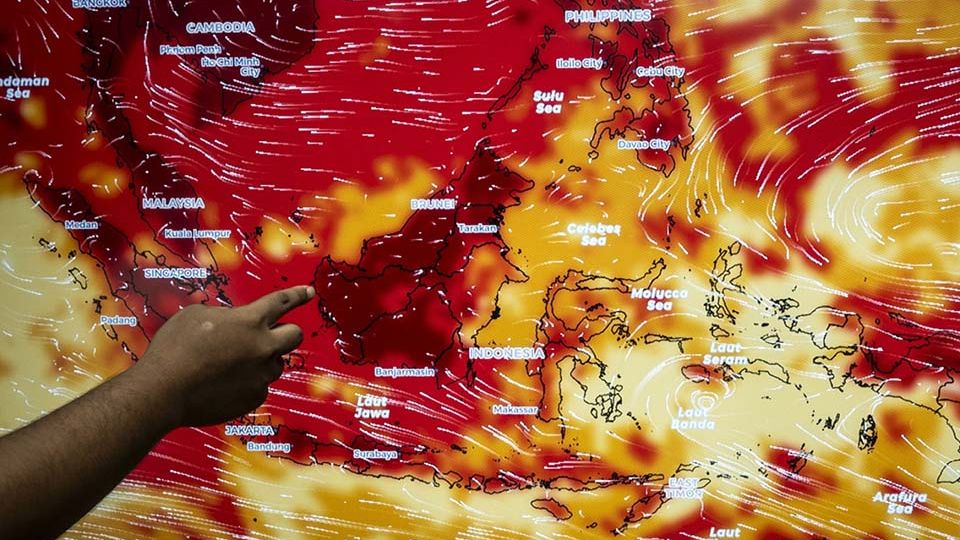May 9, 2024
JAKARTA – April was the hottest month year-on-year (yoy) as the country’s weather agency recorded an increase of nearly 1 degree Celsius last month, the highest temperature anomaly observed in any Aprils the past four decades.
The Meteorology, Climatology and Geophysics Agency (BMKG) recorded an increase of 0.89 degrees C for April’s average temperature compared with the last three decades, from 26.9 degrees on average between 1991 and 2020 to 27.7 degrees this year.
The normal temperature for Indonesia in April, according to the agency, ranged from 20.1 to 28.6 degrees C.
Among areas recording the highest yoy average temperature increases across the country were Kotabaru regency, South Kalimantan, with a 2.2 degree C increase; North Barito regency, Central Kalimantan (1.7 degrees C) and Medan, North Sumatra (1.5 degrees C).
On the other hand, Southeast Maluku in Maluku recorded a 0.5 degrees C drop in the yoy average temperature.
Read also: Outdoor workers at risk amid scorching heat
The average temperature observed in April is in line with a rise observed since the beginning of the year. The highest temperature average was recorded in February at 27.4 degrees C, around 1 degree C higher than the average recorded between 1991 and 2020 of 26.4 degrees C.
While a 1 or 2 degree C rise in average temperature does not seem much, such an increase may prolong hot days without rain and cause droughts to be longer. Vulnerable people, such as children, the elderly and those with health conditions, may also be at risk due to the heightened potential of heat-related illnesses.
The observation came as many parts of the country were hit by extreme heat, with temperatures hovering between 34 and 36 degrees C. The highest temperature in the Greater Jakarta area, around 37.2 degrees Celsius, was recorded on April 17.
Indonesia’s extreme heat over the past few weeks has been in line with heat waves and the El Niño phenomenon hitting most Southeast Asian countries. The Philippines, for example, hit a new temperature record of more than 40 degrees C, prompting the government to issue heat warnings and suspend in-person classes in schools.
But the BMKG reasserted its stance that the extreme heat hitting the archipelago was not the same as the heat wave hitting its neighbors. The agency argued that heat waves normally hit areas in higher latitudes and near vast landmasses, which are not fulfilled by Indonesia, which is located on the equator and enclosed by oceans.
Instead, the hot weather in Indonesia has been caused by the seasonal transition, the agency said. Dry winds from Australia have started to reach the archipelago, causing less frequent cloud formations and rainfall and causing the overall air temperature to rise while the humidity persists, said BMKG head Dwikorita Karnawati on Monday.
Read also: Heatwave swells Asia’s appetite for air-conditioning
Experts say that people in areas with higher humidity tended to experience hotter perceived temperatures because their sweat did not evaporate as readily.
“The transitional period is typically marked by bright mornings and hot afternoons, accompanied by fast cloud formations that increase the temperature, followed by rain in the evenings,” Dwikorita said.
Scientists warn that the climate crisis may exacerbate the situation in the future, with the country likely to see the average temperature rising every year. The highest temperature recorded in Indonesia was 39.4 degrees Celsius in 2023.
Health authorities have encouraged people to stay in the shade and limit their outdoor activities between the hours of 11 a.m. and 3 p.m. For people whose activities are mostly outdoors, where staying in the shade is close to impossible, regularly hydrating is among measures to prevent dehydration and heat stroke.


